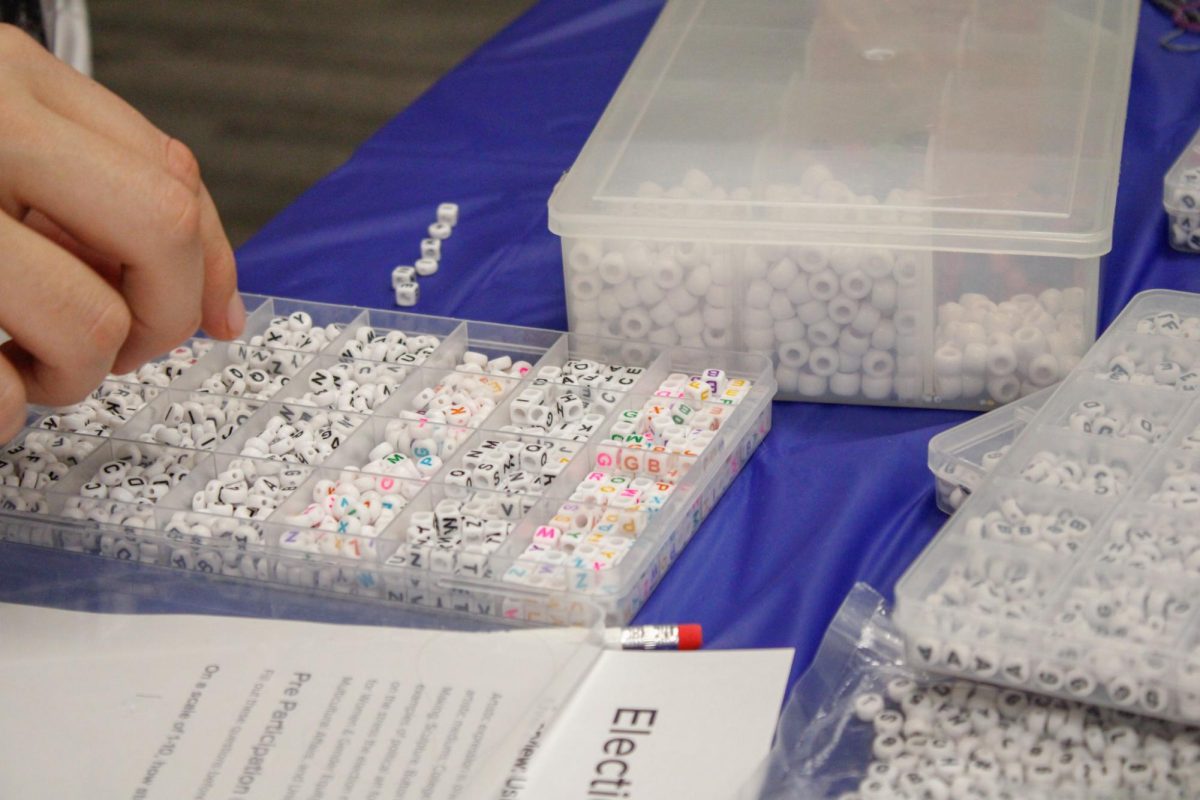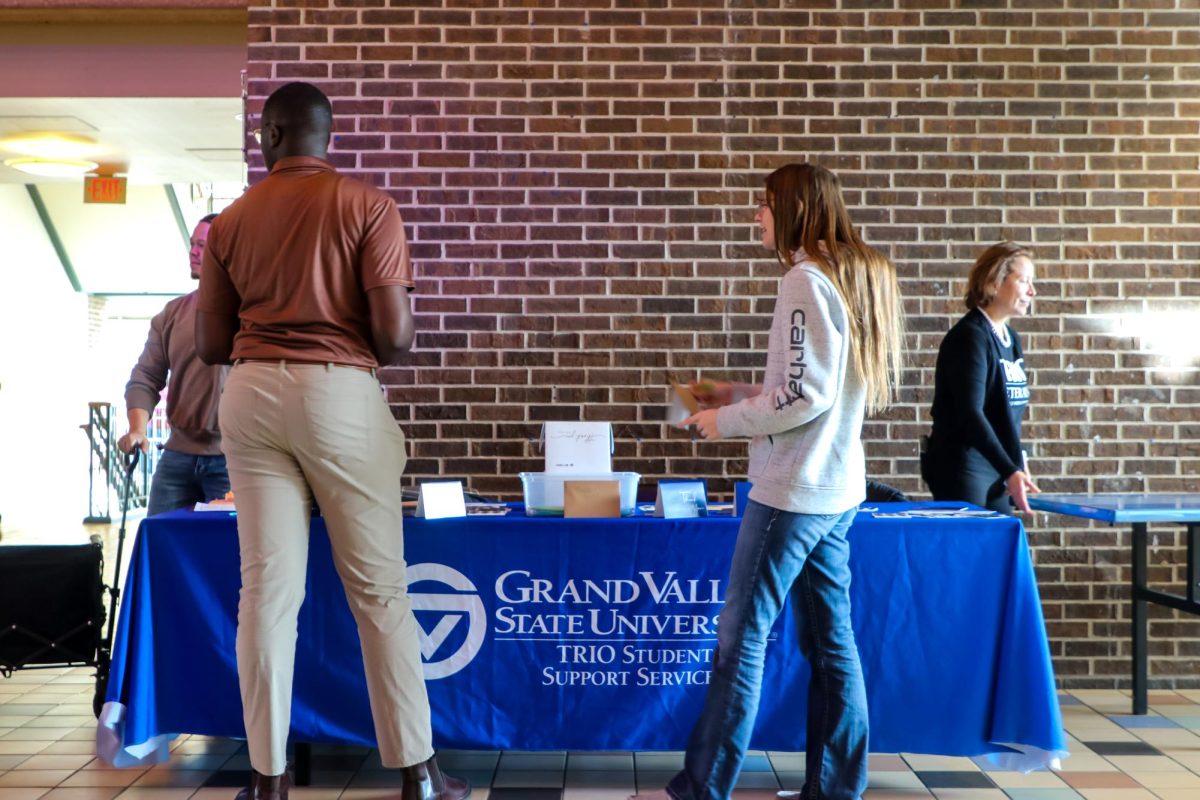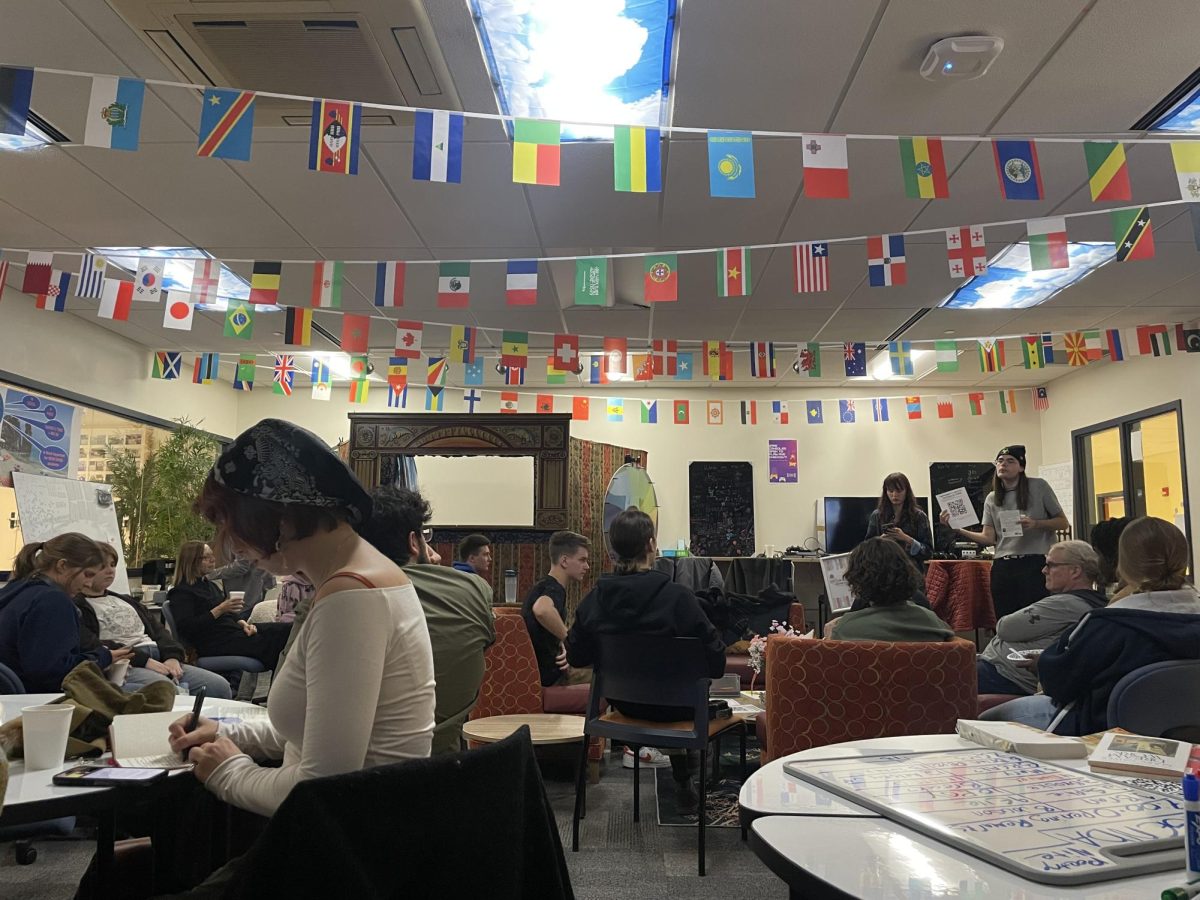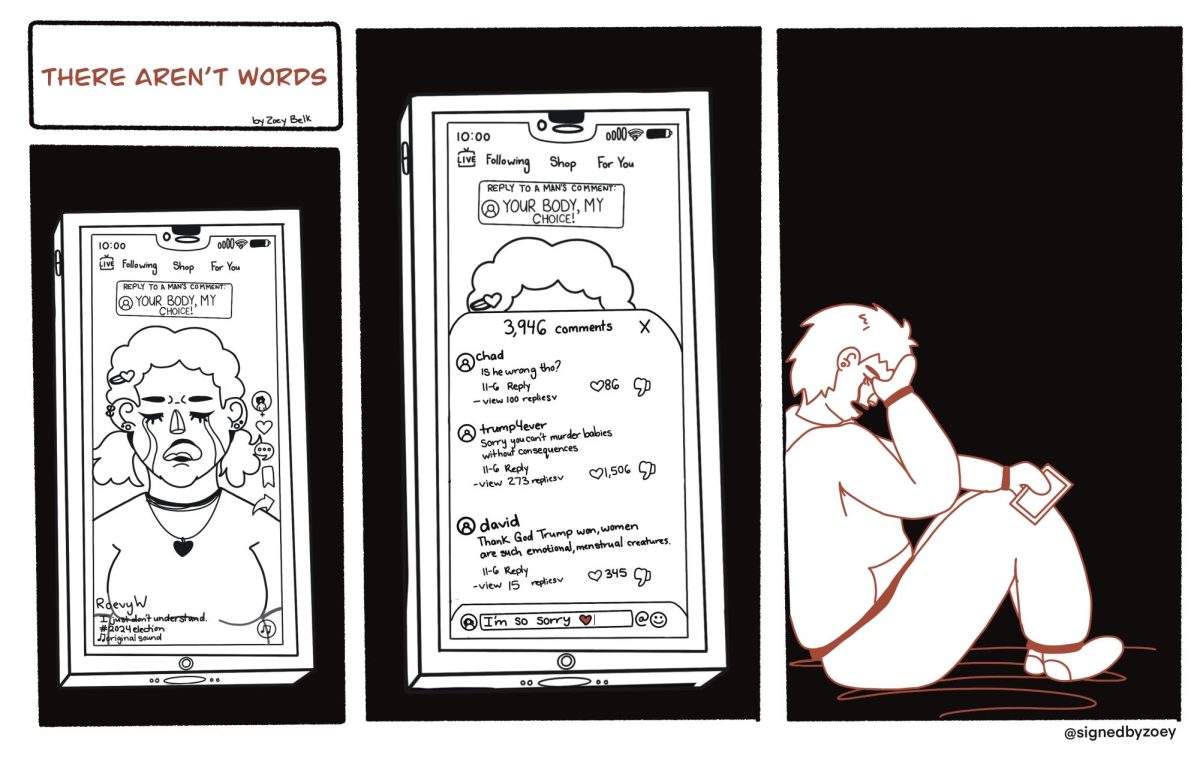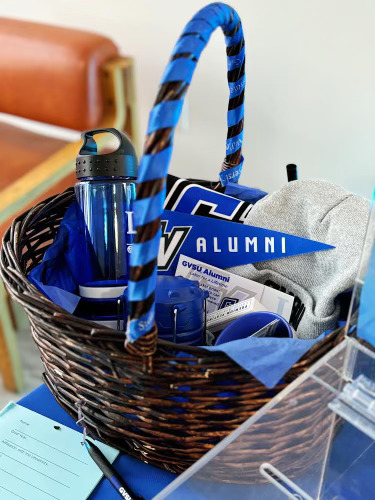Off the Boensch: Basketball standout Cassidy Boensch stepping up to fill injured player’s spot
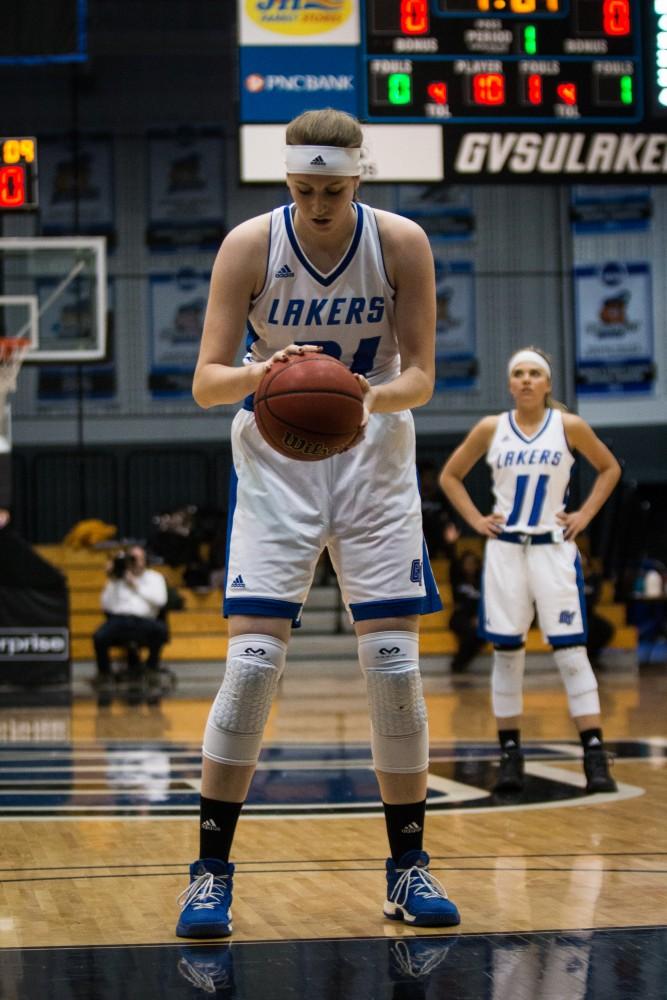
Feb 22, 2018
Many people have blessings. Some of them are easy to notice. Some of them are not.
Cassidy Boensch’s blessing—her imposing 6-foot-4-inch frame that is so rare even in Division II basketball—stands out in all the right ways.
“I’ve been playing basketball since fourth grade,” she said in an interview after practice at the Fieldhouse Arena.
“How long have you been 6-foot-4?” called out point guard Jenn DeBoer from behind her with a laugh. Boensch joked that it’s been since sixth grade before giving a serious response: She has been 6-feet-4-inches (an entire foot taller than the average American woman) since “eighth or ninth grade.”
Talk about a growth spurt.
But somehow, her gift of height did not immediately draw college scouts in her direction—and that even goes for Grand Valley State. Her first contact with the school came through her own initiation, not from the Lakers.
“They actually were recruiting because (GVSU guard) Jenai (LaPorte) and I played on the same AAU team, and they had invited her out to a football tailgating thing,” Boensch said. “I was like, ‘Oh, I want to come,’ so I contacted the coaches and they were like, ‘Yeah, of course,’ and ever since then we just had a personal contact, and I committed here like before my junior year of high school.”
Luckily for head coach Mike Williams, the girl who wanted to tag along with her teammate to their tailgate ended up being pretty good.
“I had seen her play, and she was a player that we thought had great potential with her size,” Williams said. “She had size, she was skilled, she had good feet, good hands and good athleticism.”
When she first arrived at GVSU for her freshman year, she felt the nerves that come with settling into a new place and new lifestyle. Along with being a student, she obviously had to focus on basketball, too.
Lucky (or unlucky) for her, the Lakers’ roster was chock-full of seniors and talented post players, meaning she would only average 9.7 minutes per game during her first season.
“I think (not playing much is) the best way to learn because you learn and, when you get in, you’re put in situations where you can succeed,” Williams said. “Sometimes players play too soon, they get in situations where they fail and they don’t get a chance to grow, and I think it was a great year for her.”
In her limited action, Boensch averaged 4.1 points, 2.6 rebounds and just over one block per game on 48.5 percent shooting. Not bad for a freshman playing only a few minutes, but hardly anything to write home about.
This season started out with more of the same: few minutes, decent numbers. Boensch still came off the bench to back up senior post players Korynn Hincka and Taylor Parmley, which the sophomore had no qualms with.
Then, something weird happened.
In week seven of the regular season, Boensch was awarded the GLIAC North Player of the Week award for the first time in her collegiate career and did so by coming off the bench in all three games. In wins against Cornerstone University, Saginaw Valley State and Northwood University, Boensch averaged 14.3 points, six rebounds and 4.3 blocks per game to claim the award.
The honor would not be her last. Boensch earned her first career start against Wayne State on Thursday, Feb. 8, when Hincka was forced to sit out with a concussion. She went on to average 14 points and nine rebounds during the weekend, resulting in another GLIAC nod the very next week when she averaged 22 points and nine rebounds against Ashland and Tiffin—a game she also started following Parmley’s season-ending knee injury.
If you’re keeping track, that’s three Player of the Weeks and only two starts.
“I just think it shows her coach isn’t very smart,” Williams said. “That’s what it shows there that she’s not starting, but I think that’s a nice thing about this team. There’s a role, and her role has been to come off the bench, and I don’t think our players care who starts and who doesn’t start, and I think it’s allowed her to grow, coming off the bench, and play in situations where she can succeed. By doing that, obviously she’s had three great weeks of the season and three GLIAC awards.”
By now, Boensch has gone from a player who plays select minutes off the bench to one of only two players in the conference to win at least three GLIAC POTW awards and someone who draws frequent double-teams.
“I guess I didn’t really think about it like that,” Boensch said. “I don’t know—going into this year, I knew my role was going to be a lot different from last year, but with two great senior post players, I knew my role was going to be coming off the bench, and that’s where I fit in all season.
“To be honest, that’s where I’d rather be if it meant we could have (Parmley) back, but I’m glad that I was able to play a couple games from whatever role I had to play and help the team get a win.”
This season, the sophomore has seen her numbers rise across the board. Now playing 18.2 minutes per game (only seventh most on the team), she is averaging 10.5 points (fourth), 6.3 rebounds (second), 1.6 blocks (first) and is shooting a 62.2 percent from the field, which is highest on the team, second in the GLIAC and would be fourth in the entire country if she had qualified at the time of writing this.
Again, this is a sophomore who played fewer than 10 minutes per game last season.
With youth comes room for improvement. Boensch wants to improve her outside game, as she is 0-2 from 3-point range in her GVSU career and is shooting only 66.4 percent on free throws in her two years with the Lakers.
For Williams, too, there’s plenty to work on in order to get Boensch to the level she is capable of reaching.
“Basically three things,” Williams said. “Number one is her strength. Just getting strength and toughness, both mentally and physically. The GLIAC can be a really physical conference at this level. Secondly is, I think, her balance. We’re really working on her balance, getting her down a little bit, getting her center of gravity a little bit lower, a little bit wider.
“And then just to do things at the fastest pace she can do them at. She’s a very well-thought person so she’s very methodical. She likes to take her time doing things. We’re trying to do it at more of a quicker pace and just see the game at a faster pace, and I think she’s getting better at all three of those.”
Boensch is slated to start the rest of the Lakers’ games this season, both in regular and postseason. After that, her role will only increase moving forward.















